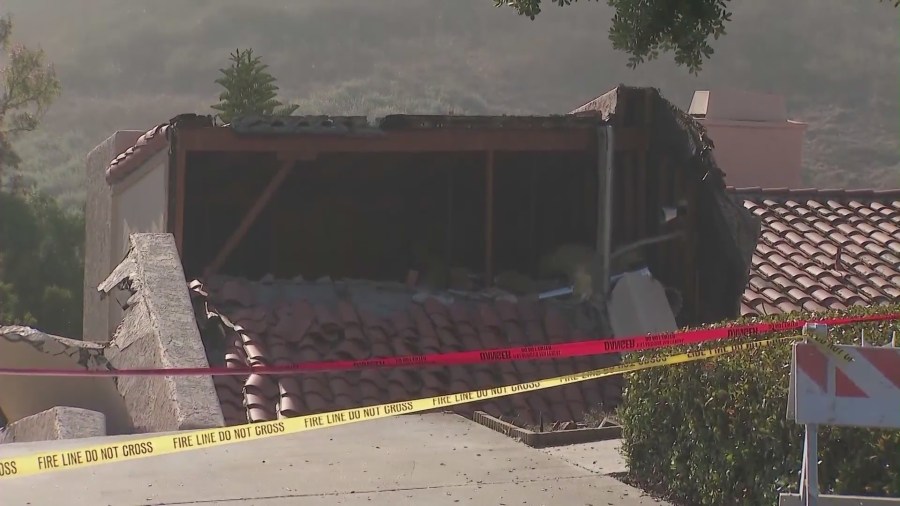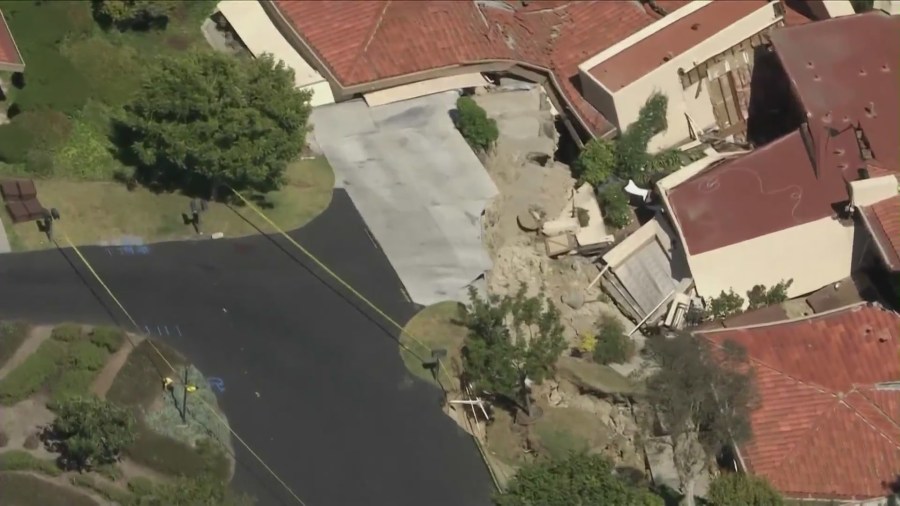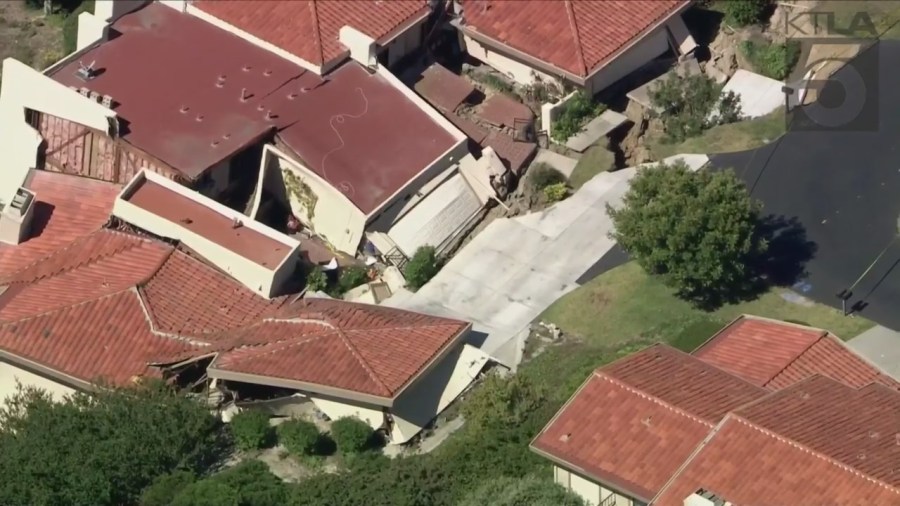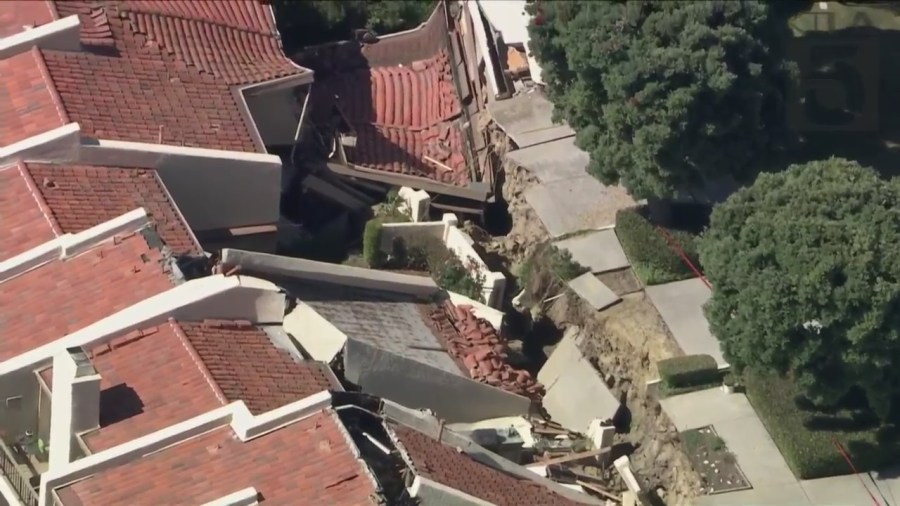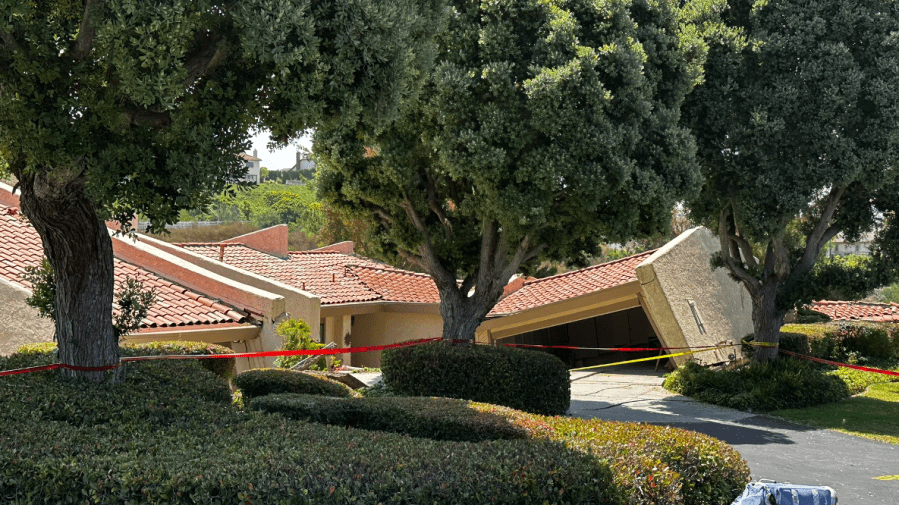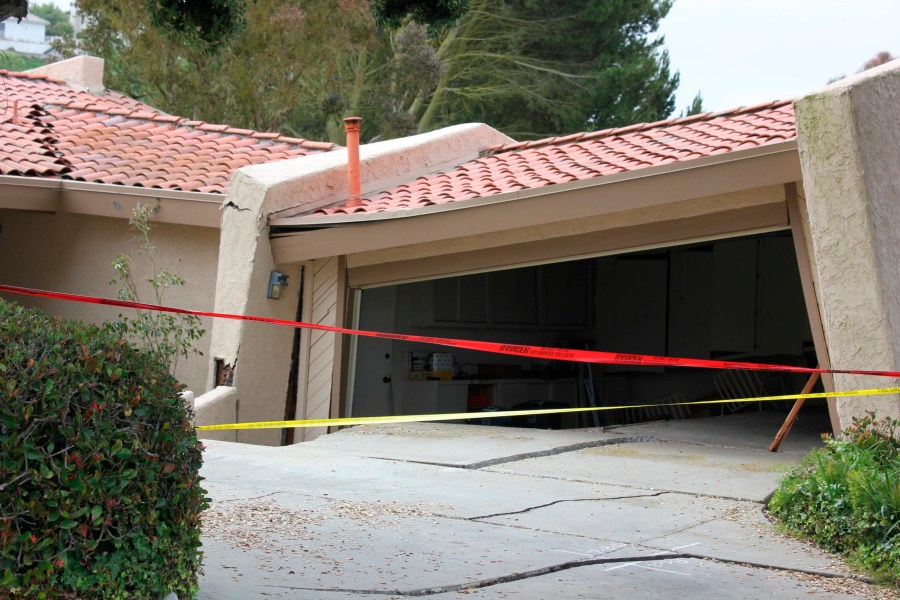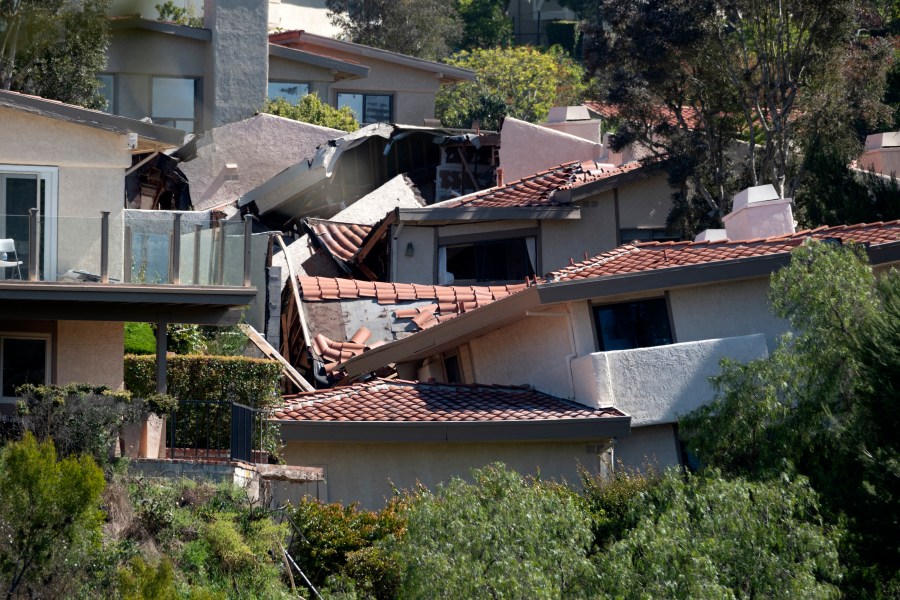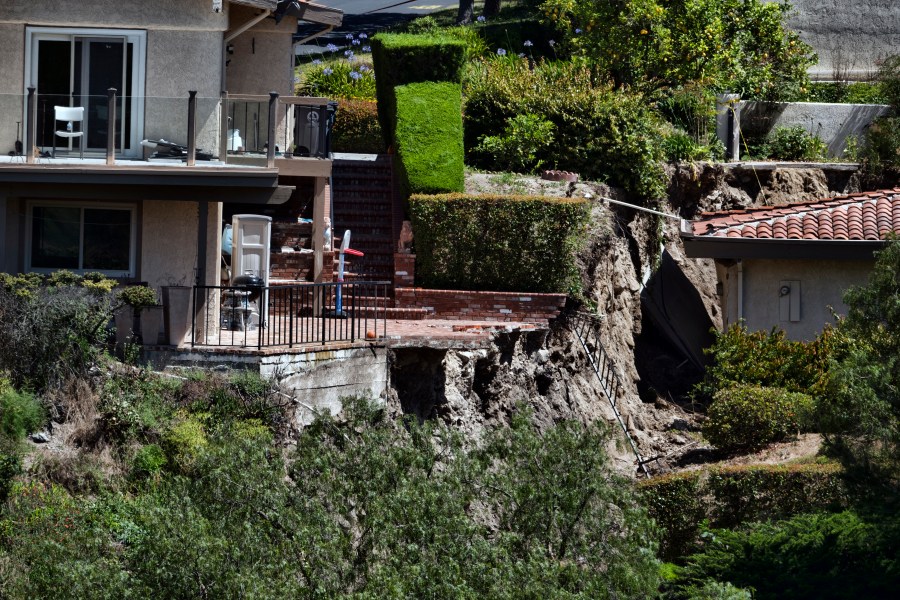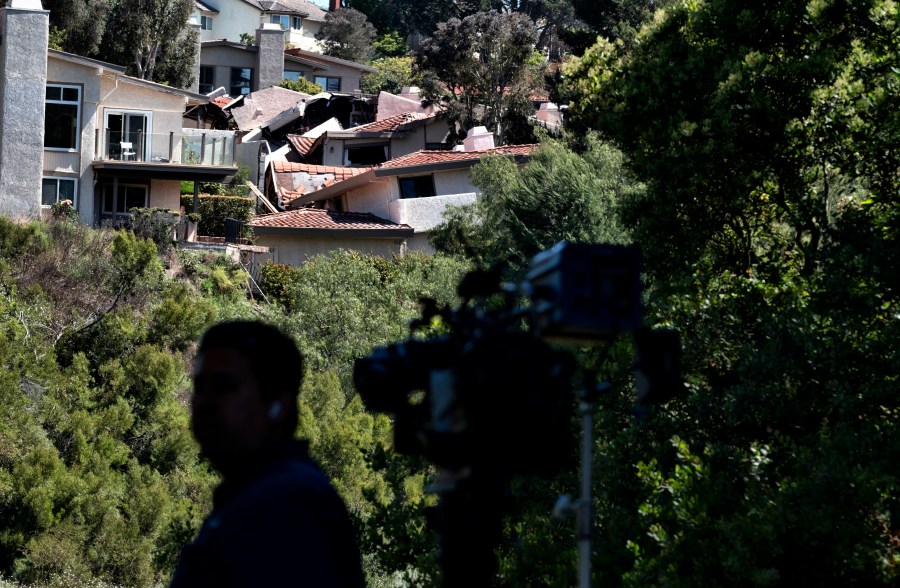As homes continue collapsing into a canyon in Rolling Hills Estates, city officials unanimously declared a local state of emergency Tuesday night as more evacuations were ordered.
The landslide was first reported late Saturday night when destructive ground shifting forced the evacuation of dozens of homes along Peartree Lane on the Palos Verdes Peninsula.
At least twelve homes were red-tagged as unsafe and residents were given just 20 minutes to evacuate. By Sunday, another 10 homes were actively moving with the shifting ground and 17 additional homes were being monitored.
The ground had shifted over 20 feet in a 24-hour period, leaving a trail of destruction behind including a jumble of collapsed roofs, shattered walls, tilted chimneys and decks dangling over an adjacent canyon.
Initially believing it was only a matter of time before some of the homes completely tumble down the steep canyon, experts now say the land sinking underneath the homes has slowed a bit, providing a sliver of hope.
The biggest unanswered question remains though — what exactly is causing the massive rift?
“There are only three things that are controlling whether you have a landslide or not and that’s the steepness of the hillside, the underlying rock type that’s underneath that hillside and the water saturation in the rocks or the soil,” said Dr. Nate Onderdonk, a professor in the Department of Geological Sciences at Cal State Long Beach. “The topography, the steepness doesn’t really change that fast and neither does the rock type, so it’s really got to be something to do with the water.”
The homeowner’s association is reportedly responsible for hiring a geologist to determine what is going on with the terrain. A fissure running among the homes raised suspicion that this past winter’s heavy rains may be involved, said Janice Hahn, chair of the Los Angeles County Board of Supervisors, who represents the area.
“It is moving quickly,” Hahn said. “You can actually hear the snap, crackle and pop every minute when you’re there as each home is shifting, is moving.”
Meanwhile, displaced residents and those who live in the community are heartbroken over the destruction and potential loss of homes.
“I am really distressed,” said Naveeda Mirza, a Rolling Hills Estates resident. “Especially right now, I came to just look at the site and that really hit me. I hope somebody will help these people because that is their lifetime investment there.”
Many of the displaced residents were unsure whether they were even insured for such loss. Insurance expert, Janet Ruiz from the Insurance Information Institute, told KTLA that typical insurance will likely not cover damages from the landslide.
Standalone earthquake insurance will also probably not cover this kind of situation. The residents’ only hope may rely on a difference in conditions policy.
“The insurance that would cover landslide, earth movement would be a difference in condition policy,” explained Ruiz. “That covers earth movement, earthquake, flooding, so it’s kind of an all-in-one policy but again it’s a specialty policy and it’s not covered under your regular homeowner’s insurance.”
City and county officials walked through the devastation during the day, assessing the damage.
Though the problem of cracks in the ground and the houses was reported over the weekend, the source of the problem is still a mystery.
“For these homes that are already gone and into the canyon, there’s nothing more we can do for them, but we think after it’s all settled, a good geologist and soil expert maybe will give us a clue about how this happened and if there’s any way to prevent it from happening in the future,” Hahn added.
For now, the county assessor is stepping in and offering property tax relief to the impacted homeowners. The assessor was also scheduled to meet with residents to inform them whether they could apply for property tax waivers.
“If you declare a state of emergency, then the homeowners can be eligible for grants, state and federal funding, even some local funding,” explained Britt Huff, Mayor of Rolling Hill Estates. “It’s just another effort on our part to try to step up and help them through this.”

